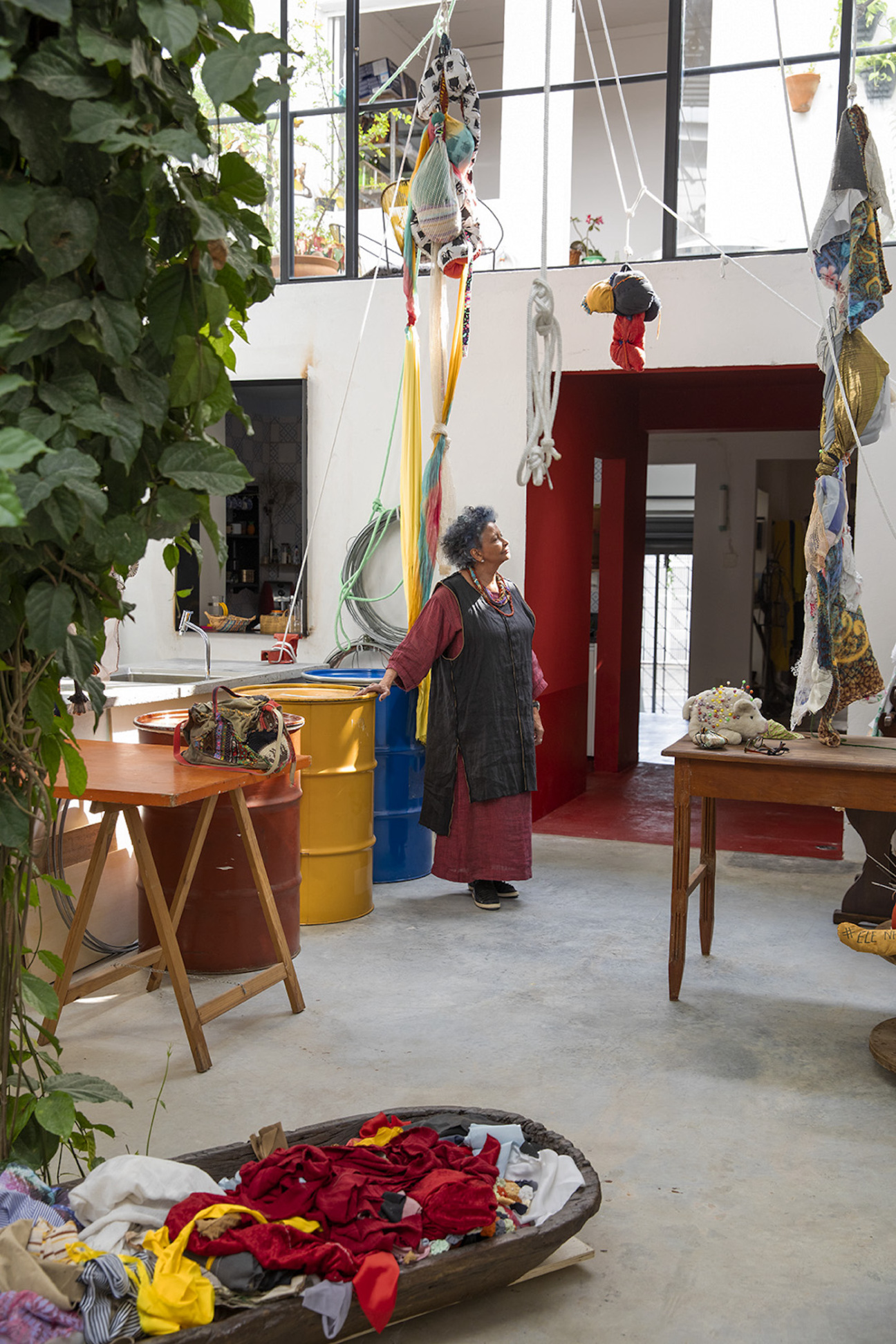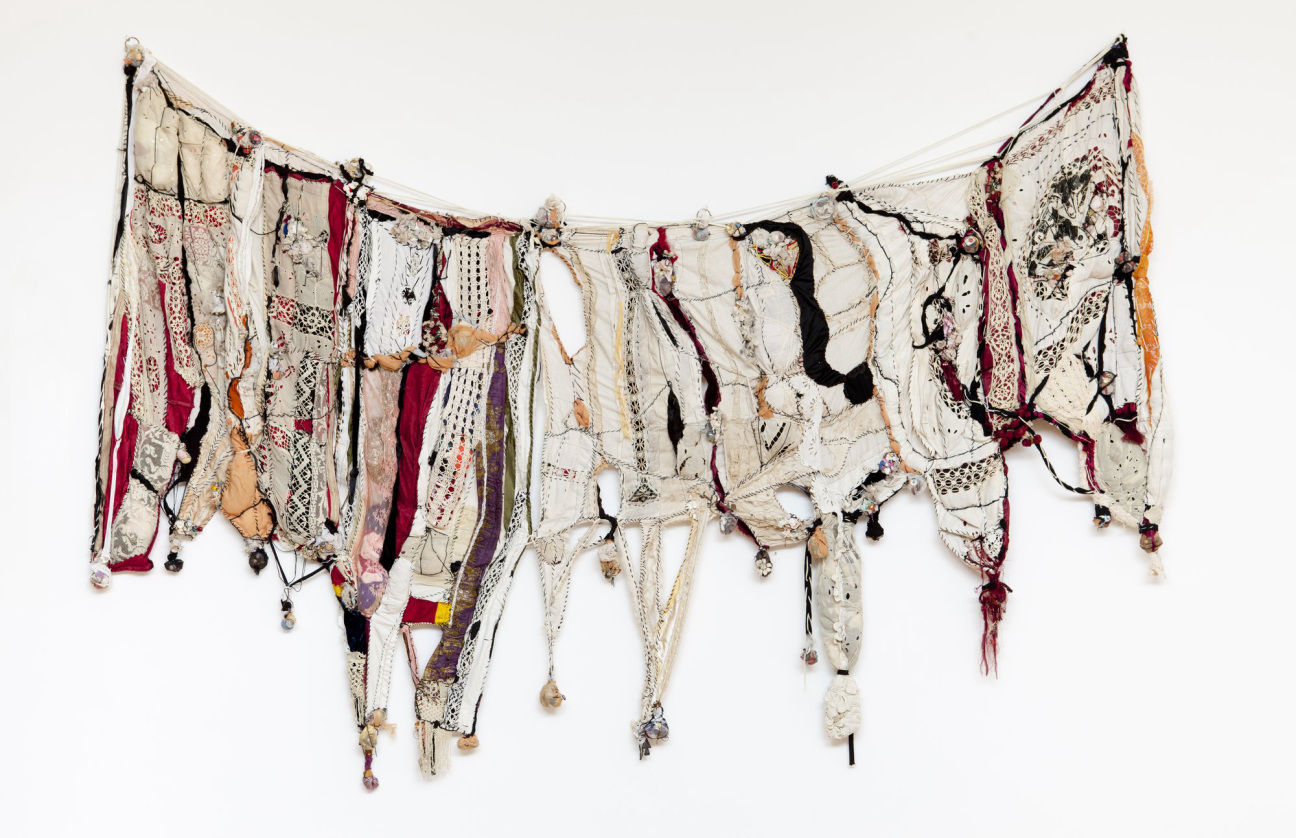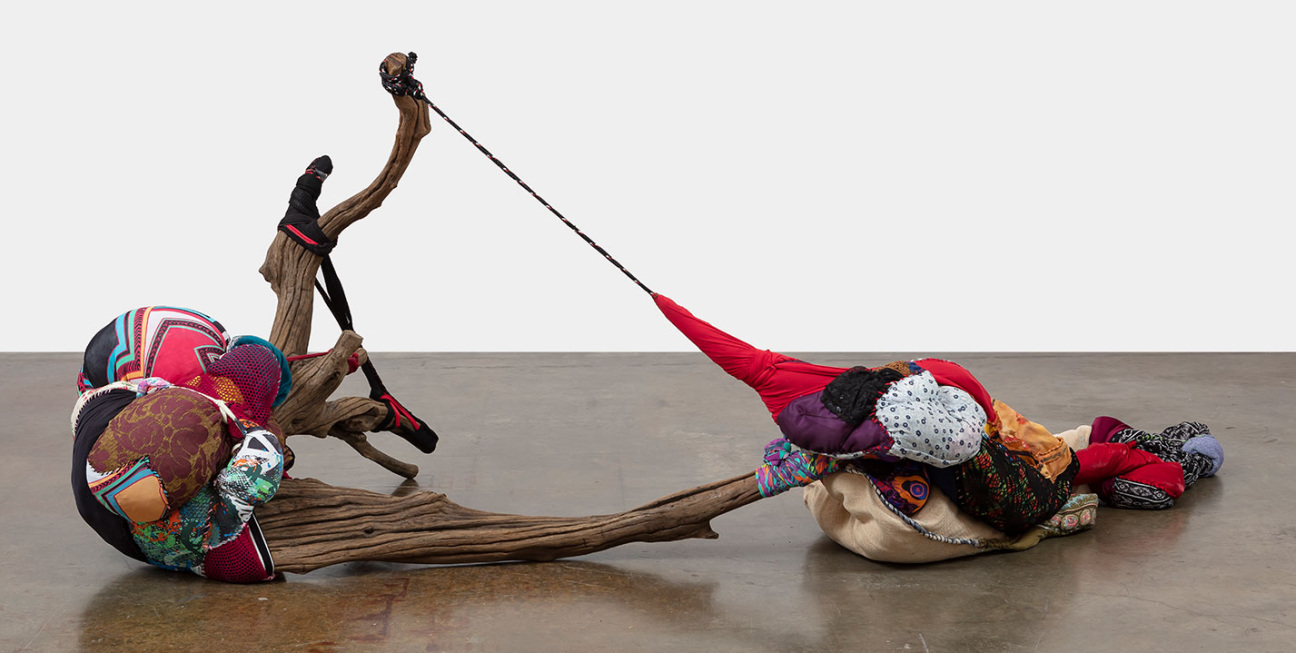
Raised in Caetanópolis, the fabled birthplace of Brazil’s textile industry, Sonia Gomes left a legal career behind at 45 to commit herself fully to artmaking. True to her roots, Gomes’s assemblages combine secondhand textiles with driftwood, creating forms that appear almost alive.
Though her inclusion in the 2015 Venice Biennale positioned Gomes on a global stage, the artist has always found inspiration within. Now 76, she shows no sign of slowing down, with recent exhibitions spanning from Sao Paulo to Paris to Palm Beach.
CULTURED: What was your first taste of the art world?
Sonia Gomes: Ever since I was young, I deconstructed and customized my clothes, created my jewelry, and made my bags and accessories. I always needed to add a personal touch, tailor what I wore, and be different. I believe there was already a calling for art in what I was doing, but it might also be because we, as Black people, are entirely invisible, looking for some visibility.
I see that practice as the beginning of my art production. In that sense, my body was the foundation and support for my creations. I continue to measure the work in relation to my body, and am still driven by the impulse to alter everything I see, manifesting in all I create.

CULTURED: Can you identify a moment that taught you how to be an artist, or shaped your understanding of what an artist is?
Gomes: I don't have a crucial turning point that taught me to be an artist; things happened naturally. I started to create out of pure necessity. At that time, I had no idea what the work could become. I didn't aspire to become an artist. When I was younger, I believed that only painters were artists.
An essential moment in shaping my understanding of what it means to be a contemporary artist and the many possibilities of production was when I went to study art at Escola Guignard. I met teachers who showed me possibilities other than canonical paintings and figure drawing. Those teachers also indicated to me that my work had artistic quality.
Another crucial moment was when my work finally began to be shown and appreciated by others as art. I had my first solo show in 2004 at Sandra e Márcio Objetos de Arte in Belo Horizonte. A decade after this exhibition, I started to be represented by Mendes Wood DM and, in 2015, was included in the 56th Venice Biennial. These moments were critical for me to understand myself as an artist.
CULTURED: Who's an artist who paved the way for the work you do?
Gomes: When I first came upon works by [Arthur] Bispo do Rosário, I felt validated. I don't typically seek references in other artists' works; my work tends to be self-referential, unfolding from within. However, I believe that Bispo and other artists, particularly those of African descent, share a visceral, collective memory that operates unconsciously.
Maybe because of this memory that inhabits us and our production, people often draw connections between our works. I believe we are still here together, Bispo and a series of Black artists, who struggled to have their practice recognized as art and paved the way for others.

CULTURED: Was there a moment when you thought about leaving your practice behind? Why didn't you?
Gomes: I never thought about leaving my practice; I left my life as a lawyer to continue my production. I have always believed in the work and its power. Creating is a need for me, and it has never crossed my mind to abandon it, even when it seemed incomprehensible to some.
In the early 2000s, when the work was beginning to gain recognition, I produced cathartically. I used to stitch and cry, stitch and cry, and create non-stop. Lately, I have become more formalist. I enjoy spending more time exploring the shapes within the work. I'm constantly seeking abstraction, asymmetry, volumes, and, above all, beauty. The work is alive, and so am I.
CULTURED: What advice would you give to a young artist who looks up to you?
Gomes: Never give up. Keep up with freedom, courage, and perseverance in your work.
This interview is part of a series of conversations with female artists over the age of 75. To read more, take a look at our our stories with the avant-garde Pippa Garner, pioneering video artist Dara Birnbaum, and prolific creative Liliana Porter.










 in your life?
in your life?

